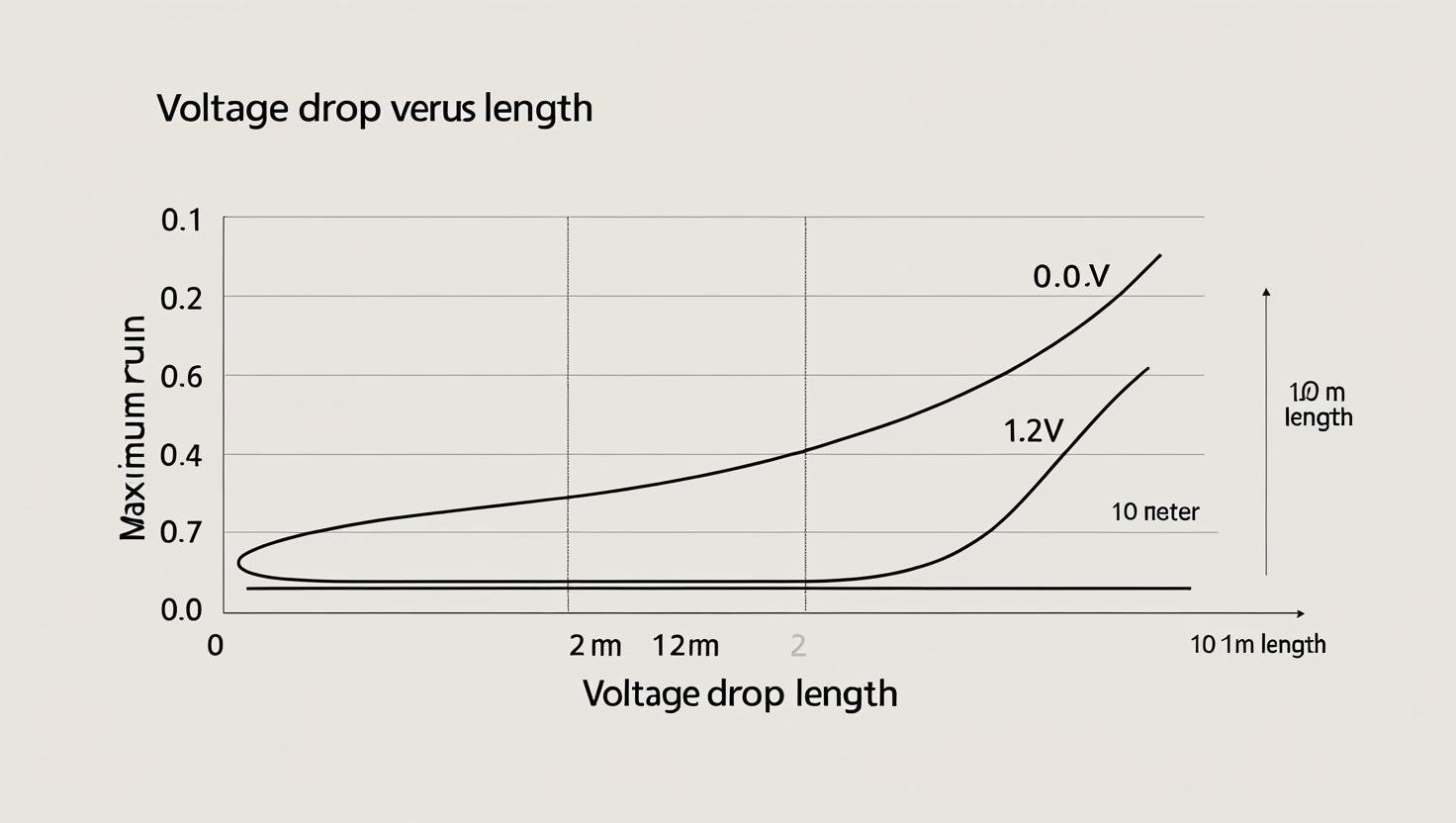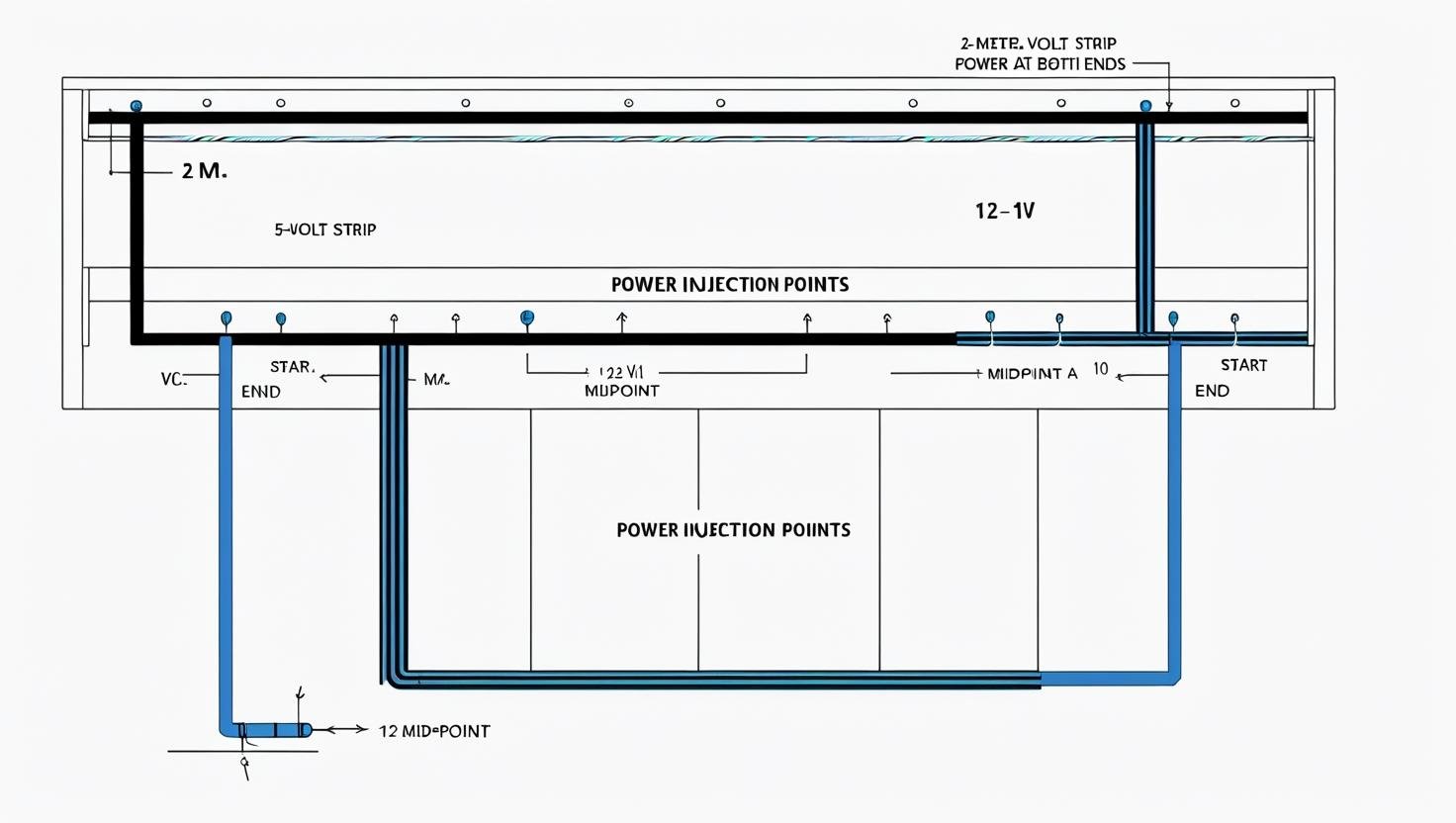

Selecting the wrong strip voltage can lead to dimming, overheating, or controller failure. Let’s explore how 5 V and 12 V LED strips differ in power, efficiency, run-length, and application so you pick the perfect option.
Here’s the quick comparison:
At a fundamental level, 5 V LED strips run on lower-voltage rails—ideal for USB-powered or battery-backed setups—and support tighter pixel spacing for high-resolution effects. In contrast, 12 V LED strips use higher-voltage rails that allow longer uninterrupted runs with lower current per metre, reducing voltage-drop over distance. Voltage choice also affects connector standards and power-injection requirements, so matching strip voltage to your controller is essential to prevent damage and ensure optimal performance.
LED strips typically draw 1.2 A per metre, but the voltage rail affects their power consumption and maximum run length:
| Voltage | Current (A/m) | Power (W/m) | Max Run Without Injection |
|---|---|---|---|
| 5 V | 1.2 A | 6 W | 2 m |
| 12 V | 1.2 A | 14.4 W | 5 m |
Data source: DOE Solid-State Lighting Fact Sheet 2024
Key insight: Both types draw the same current per metre at full brightness, but a 12 V rail delivers more power and allows longer runs between power-injection points.
As strip length increases, voltage drop (∆V) reduces brightness at the far end. Calculate ∆V with:
∆V = I × R × L
Worked example:


Voltage choice directly impacts how many LEDs you can pack per metre and the type of addressable control available:
No—5 V ARGB strips require a 5 V data signal and power rail. Plugging them into a 12 V controller will overvoltage the LEDs and likely damage both strip and controller. To use a 5 V strip, select a matching 5 V addressable controller or employ a buck converter to step down 12 V to 5 V, ensuring both power and data-signal levels are correct.
What happens if you power a 5 V strip with 12 V?
Applying 12 V to a 5 V strip will overvoltage and likely destroy the LEDs instantly. Always match your power-rail voltage exactly or use a proper buck converter to step down safely.
How do I know if my LED strip is 5 V or 12 V?
Check the strip’s markings near the copper pads (often printed “5 V” or “12 V”), refer to the product specs, or measure the required input voltage on the controller. Never guess—verify before connecting.
Is 12 V always better than 5 V for LED strips?
Not necessarily. While 12 V strips allow longer runs and lower voltage drop, 5 V strips enable tighter pixel spacing and USB compatibility. Choose based on run length, pixel density needs, and power source.
Choosing between 5 V and 12 V LED strips comes down to your project’s length, pixel density, and power source. For detailed voltage-drop calculations, use our LED Voltage-Drop Calculator. To select the right controller for addressable strips, see the Addressable LED Controller Guide. For efficiency benchmarks, refer to the DOE Solid-State Lighting Fact Sheet 2024 and consult the IEC Voltage-Drop Standard PDF.